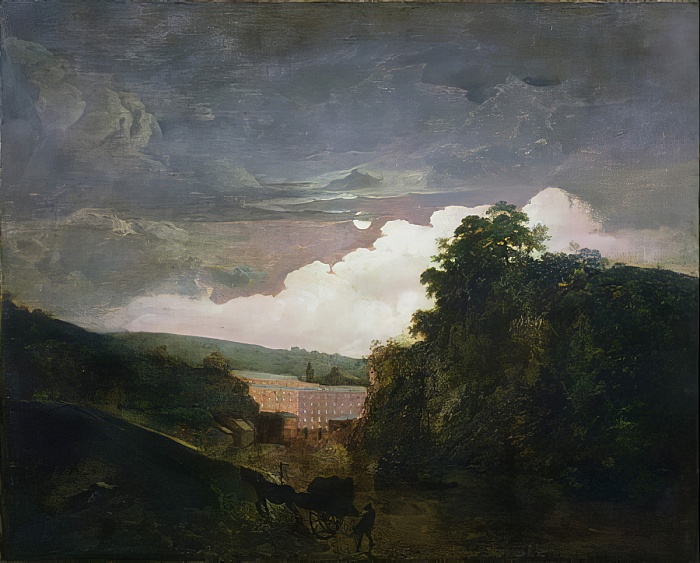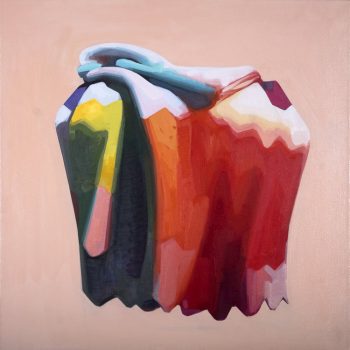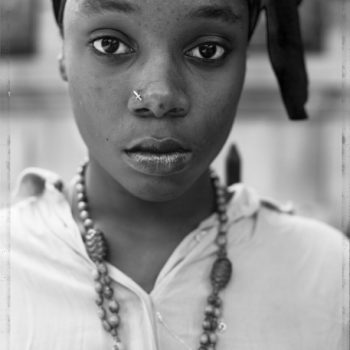_________________
A BRIEF SUMMARY OF WHAT’S IN THIS PAINTING?
Joseph Wright of Derby’s Arkwright’s Cotton Mills by Night
_____________________
Many people love art, they regularly go to exhibitions and often have broad collecting interests.
Moreover, they perpetually seek out the main galleries and exhibitions to visit when travelling.
And yet many art lovers struggle with ‘how to interpret art’? What is it that makes an artwork special? Why does it capture your heart and imagination?
As soon as I saw Arkwrights Cotton Mills by Night, I was gobsmacked by its seamless beauty.
When viewing art there are often multiple contexts at play (and contexts within contexts) : sociological, historic and formal among others depending on the work.
Here are a few thoughts on why this 18th century painting stood out for me.
______________________________________________________

Joseph Wright of Derby, Arkwrights Cotton Mills by Night, c1782-3, Oil on canvas, 99.7 x 125.7cm
______________________________________________________
A telling quote!
The point of the painting, Jonathan Crary tells us in 24/7, isn’t just about industrialisation: it’s about the erosion of all distinction between day and night. The workers in the mills were organised into two 12‑hour shifts. The mills never stopped.
______________________________________________________
HISTORICAL ‘INDUSTRIAL REVOLUTION’ CONTEXT
Taking the above quote as a starting point and the time of day as either late afternoon or more likely early morning, the cotton mill ran 24 four hours a day in two 12 hour shifts.
Prior to the beginning of cotton milling on a large scale all fabrics were made by hand with basic machines.
Textile workers plied their craft at home, sometimes to supplement farming. Women spun yarn, often helped by children. The yarn then went to a weaver, usually a man, who might be another family member weaving cloth for the household.
The subject of Wright’s painting is the precursor to a new norm for industrialised factories in the second half of the 18th century.
______________________________________________________
POETIC SKILL OF THE ARTIST: METAPHOR & CONCEPTUAL JUXTAPOSITIONS
The painting is divided into two distinct areas: the dark and gloomy foreground against a picturesque brighter background.
In the foreground of the picture is an individual trader or farmer sloughing along with a packhorse pulling his wares to or from market. In the centre is the factory building as the prime subject matter which has impacted him (and all those like him) negatively.
The division in the picture can be read metaphorically, to mean dark and light: the traveller is ‘in the dark’ – both literally and figuratively – proceeding ‘away from the factory’ he belongs to a past, pre-industrialised, and by comparison, stagnant society.

His ‘type’ has now been consigned to the margins in life, indicated by the formal treatment of the subject in this part of the image: that is the ‘stagnant muddy hues’, and the cursory manner Wright has pictured his subject.
By contrast the bright and prominent factory represents the future, or the ‘way forward’ – it suggests progress.
This view is enhanced by the surrounding and idyllic clouds and light shining directly above the building: a view undoubtedly embraced by Arkwright himself as a Capitalist.
Our eye is drawn immediately into the centre of the work and then up to witness the glorious light which works to symbolise the ‘dawning of a new era’: a new era which puts Arkwright firmly in ‘the spotlight’ as innovative and progressive.
______________________________________________________
THE PAINTING IS BOTH STRIKING AND MOVING
For all the historical and metaphorical associations which can be identified in the work, it is luminously and harmoniously beautiful.
The brushwork is ‘less precise’ than Royal Academicians (The RA established in 1768) at the time would have had artists aspire to; and one which, along with an interest in nature, more forcefully characterises the Romantic movement of the first quarter of the 19th century. This type of brushwork was considered as suitable for en plein air sketching (outdoors), preparatory to working the sketch up to a full blown painting later in the studio.
The loose treatment gives the work however, a wonderful spontaneity – as if the conditions within the landscape are ‘about to change’ at any moment: a fleeting immediacy.

In addition the palette runs the full spectrum from dark and sludgy, to soft medium tones through to bright highlights in keeping with diminishing perspective. Wright is a Master of the medium; manipulating the paint to enrich the subject with alluring colour formations. The soft roiling clouds and light, indicated by transitional tonal hues indicates that change is in the air.
Moreover, the impression of shifting light and clouds adds a gentle dynamic beauty (and could indeed be the subject alone), it enhances the sense of time moving forward in a state of transformation.
______________________________________________________
THE DARK UNDERBELLY OF THE INDUSTRIAL REVOLUTION

Reiterating
Before the 1760s, textile production was a cottage industry using mainly flax and wool. A typical weaving family would own one hand loom, which would be operated by the man with help of a boy; the wife, girls and other women could make sufficient yarn for that loom.
Fabric production in the home was effectively wiped out by industrialised factory production: new and improved technology put individual families out of work.
____________________
While the initial quote highlights the evolution of factories, with 24 hour operation enabled by ‘workers’, it does not spell out the underbelly of such work.
Women and children were often ‘the workers’ who had no choice (for a multitude of possible reasons), but to perform the work in order to survive.
In 1771 in Derbyshire, England, the Cromford Mill became the first water-powered cotton spinning mill. Women workers were critical to the success of this mill and others like it. Women worked long hours – sometimes 80 hours a week…Conditions were often unsanitary and dangerous…Women were usually paid less than men, and they were not treated equally.

On the other hand, the trader on the margins of this situation (like the man in the painting) with little capital other than a horse and cart and his skills lacked a position in society from which to fight back against industrialisation.
In due course across the 18th century individuals formed groups of disillusioned and disaffected workers whose livelihoods were ‘on the line’ due to the industrialisation of their crafts; the Trade Union movement began at this time in England.
This point of view culminated in the early 19th century activities of the Luddites based in Nottingham; which ultimately became an organised rebellion against industrialised Capital over a four year period from 1811 – 1816 – with dire consequences for the workers.
The word ‘Luddites’ refers to British weavers and textile workers who objected to the introduction of mechanised looms and knitting frames. As highly trained artisans, the new machinery posed a threat to their livelihood and after receiving no support from government, they took matters into their own hands.
______________________________________________________
Joseph Wright of Derby’s Arkwright’s Cotton Mills by Night is not only of its time in myriad ways, but it poetically depicts a unique part of English history. For access to many significant works by this artist visit Derby Museums.
Click on images for greater definition!
Disclaimer: The thoughts and concepts listed here are by no means exhaustive, representing only a brief appraisal – much more could be said.



































